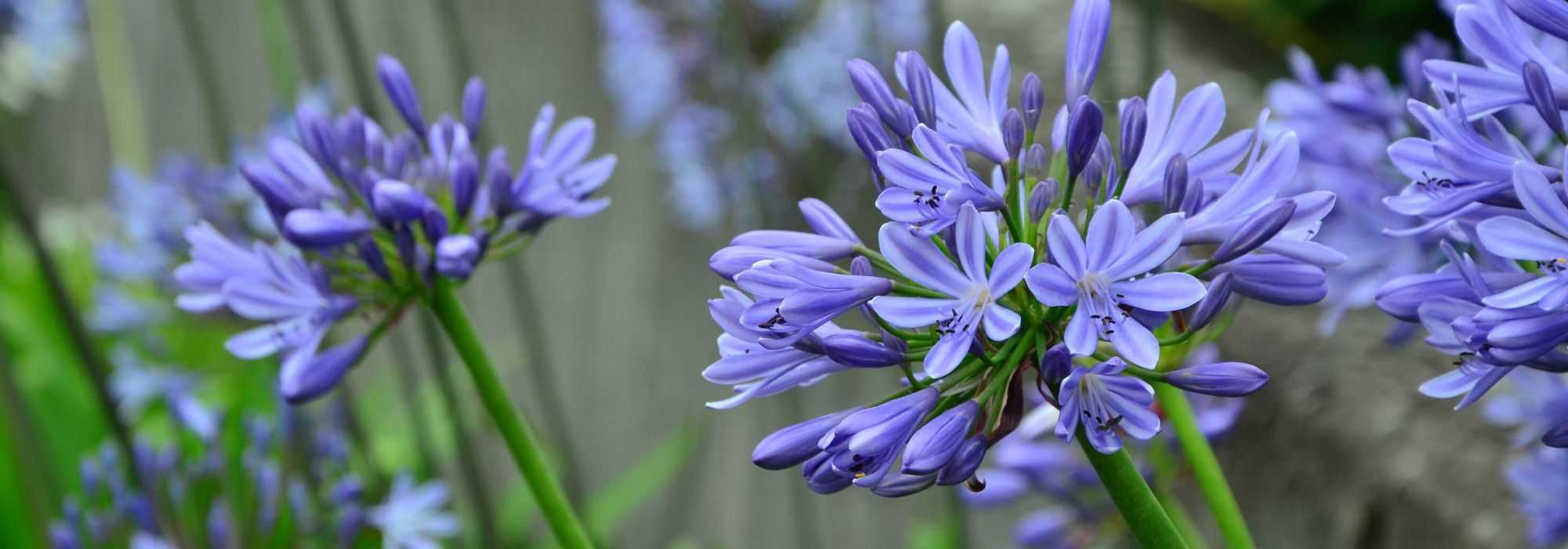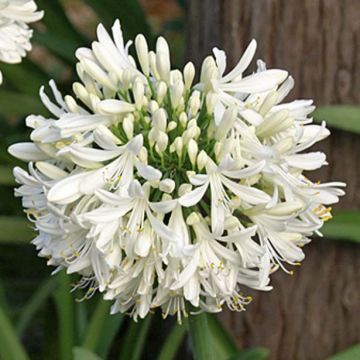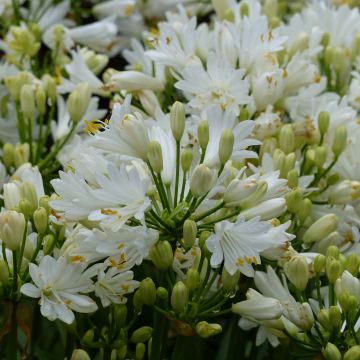
How to protect agapanthus over winter?
Our tips to protect them from the cold
Summary
Agapanthes or Agapanthus are bulbous plants prized for their umbels of star-shaped blue, violet or white flowers in mid-summer. These exceptional plants have variable hardiness, ranging from -5°C to -15°C for the hardiest. They are no longer restricted to Mediterranean or coastal climates and, thanks to new varieties, can acclimatise in many regions, even in northern France. In very harsh winters, agapanthes simply need winter protection.
Discover our advice on how to protect them properly from the cold, whether you grow them in pots or they are planted in open ground.
Variable hardiness
Agapanthus are rhizomatous perennials native to South Africa. Within genus Agapanthus, two types are distinguished:
- evergreen, not very hardy, that do not tolerate temperatures below -5°C such as Agapanthus ‘Peter Pan’ or Agapanthus x africanus ‘Pitchoune Blue’. Cultivation in open ground should be restricted to very mild coastal or Mediterranean climates. Elsewhere, grow in pots on a sunny terrace and bring into shelter for winter to keep them.
- deciduous varieties that tolerate down to -15°C. Hardier, they can be grown throughout France (except in montane regions) provided they have good winter protection. New varieties such as Donau, Headbourne Blue or Navy Blue are among most cold-resistant Agapanthus. They are ideal for cooler regions north of the Loire.
A sheltered south-facing position, in well-drained sandy soil, helps Agapanthus withstand cold better.

Agapanthus affected by frost
For more information read our article : “Hardy Agapanthus for the North?”
You may also read
Agapanthus: planting, growing and careHow to protect agapanthus in winter?
In winter, winter protection is essential for your agapanthus, whatever the region. This depends on your climate and on variety planted. What agapanthus really fear is severe cold combined with stagnant moisture at the roots.
Agapanthus grown in pots
In less favourable regions, container growing allows you to overwinter your agapanthus and bring them out after frosts.
Bring pots in at first frosts. Shelter them frost-free in a shed, garage or conservatory, any light-filled unheated room where temperature remains above 0°C. Reduce watering and remove saucers to avoid stagnant moisture at the roots.
Put agapanthus back outside after last frosts. Do not bring them out too early, as young shoots are sensitive to frost. Resume watering gradually: slight water deficit between February and May encourages summer flowering. In spring, apply a liquid fertiliser once a month to boost plant as it resumes growth.
If you cannot bring them in for winter; wrap pots thoroughly in several layers of cardboard or newspaper.

In cold regions, potted agapanthus should be stored frost-free!
Agapanthus planted in ground
On coasts and in regions with mild winters, agapanthus can remain in ground.
Although some varieties are fairly hardy and can withstand down to -10/-15°C in very free-draining soil and sheltered spots, garden-planted agapanthus still need winter protection!
As a precaution, protect the stump with a thick mulch of dead leaves, straw or fronds of ferns, 10–25 cm thick: adapt thickness according to region and severity of cold. Leave dead foliage unpruned: the plant’s dry leaves will serve as protection. To keep mulch in place, cover it with a tarpaulin or fine-mesh netting.
In spring, when frost is no longer a concern, remove all protection. Clean clumps by cutting all dried leaves back to soil level. Scratch in a little well-rotted compost around base of plants.
For more information and to succeed in growing them, consult our care sheet: “Agapanthus: to plant, to grow and to care for”

Thick layer of straw over stump of an agapanthus to protect it from cold
Discover other Agapanthus - Lily of the Nile
View All →Available in 0 sizes
Available in 1 sizes
Available in 5 sizes
Available in 2 sizes
Available in 0 sizes
Available in 2 sizes
Available in 3 sizes
Available in 0 sizes
Available in 4 sizes
Available in 0 sizes
My agapanthus has been damaged by frost, what should I do?
After a severe frost, agapanthus leaves may look sorry for themselves and dry out quickly. Leave them in place and do not prune them under any circumstances! Strengthen protection with an extra tapetum of dead leaves. It should regrow in spring!
- Subscribe!
- Contents










































Feedbacks